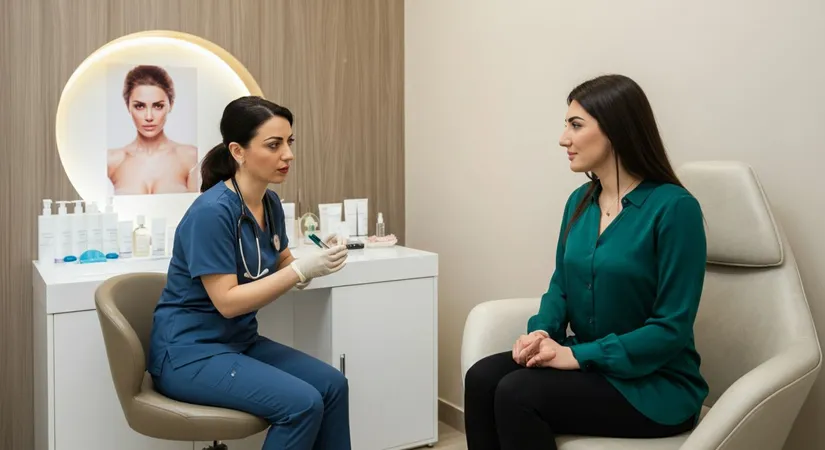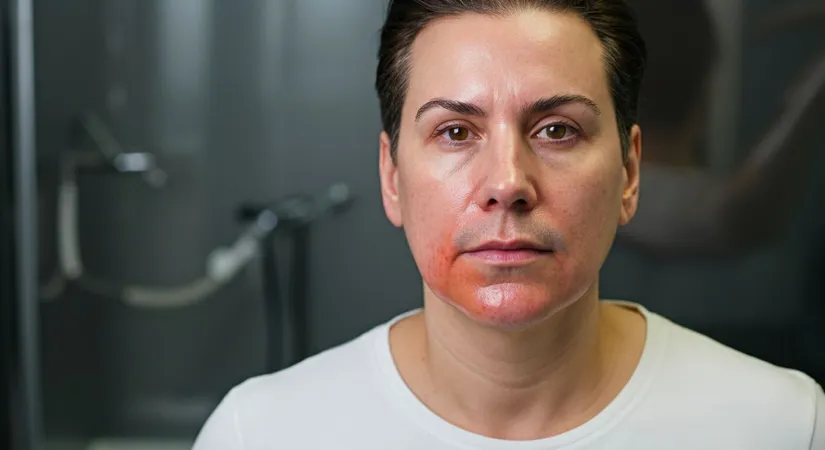Revitalize Your Look with Cutting-Edge Hair Transplantation
Transform your beauty with the art of fat injection - a natural and lasting approach to aesthetic enhancement.
Fat injection, also known as fat grafting or fat transfer, is revolutionizing the world of cosmetic surgery. This innovative technique uses one's own body fat to restore volume, contour the body, and achieve a more youthful appearance. With advancements over the years, many are turning to this natural method to enhance their beauty. In this article, we’ll explore the intricacies and benefits of fat injection techniques, along with safety concerns and longevity of the results, guiding you towards making an informed decision about your aesthetic goals.
Understanding Fat Injection: A Comprehensive Guide
Key Benefits of Fat Injection
Fat injection, also known as fat grafting, offers numerous benefits that make it a popular choice for those seeking natural body contouring. This procedure uses the patient's own fat, reducing the risk of allergic reactions and ensuring compatibility. The results are typically more natural-looking compared to synthetic fillers.
- Natural appearance: Fat injection provides a subtle and natural enhancement, blending seamlessly with existing tissues.
- Dual benefit: The procedure not only enhances target areas but also contours the donor site through liposuction.
- Long-lasting results: With proper care, the effects of fat grafting can last for several years, offering a durable solution.
For instance, individuals seeking facial rejuvenation can benefit from fat grafting, which restores volume and reduces wrinkles, achieving a youthful appearance. Similarly, breast augmentation through fat transfer offers a natural alternative to implants, appealing to those desiring a modest increase in size.
Steps in the Fat Transfer Procedure
- Harvesting: Fat is extracted from areas like the abdomen or thighs using liposuction techniques.
- Processing: The harvested fat is purified to isolate viable fat cells, ensuring optimal results.
- Injection: Refined fat cells are meticulously injected into the target area, requiring precision and expertise.
Each step in the fat transfer procedure is crucial for achieving the desired outcome. The surgeon's skill in handling and injecting the fat significantly impacts the success of the procedure. For example, precise injection techniques are essential for facial fat grafting, where symmetry and subtlety are key to enhancing facial features.

The Benefits of Fat Transfer for Facial Rejuvenation
Advantages of Fat Grafting for Facial Enhancement
Fat grafting for facial rejuvenation offers a natural and effective solution for enhancing facial aesthetics. This procedure utilizes the patient's own fat, ensuring a harmonious integration with existing tissues. It provides a natural-looking enhancement that synthetic fillers often struggle to achieve.
- Natural integration: Fat cells blend seamlessly with facial tissues, offering a more authentic appearance.
- Volume restoration: Ideal for replenishing lost volume in cheeks and under-eye areas, enhancing youthful contours.
- Wrinkle reduction: Smooths out fine lines and wrinkles, contributing to a rejuvenated facial appearance.
For example, individuals experiencing age-related volume loss in the cheeks can benefit from fat grafting, which restores fullness and enhances facial symmetry. Similarly, those with deep nasolabial folds can achieve smoother skin texture through this procedure.
Process of Fat Transfer for Facial Rejuvenation
- Extraction: Fat is harvested from areas like the abdomen using gentle liposuction techniques.
- Purification: The extracted fat is processed to isolate healthy fat cells, ensuring optimal results.
- Application: Purified fat is carefully injected into facial areas needing enhancement, requiring precision.
Each step in the fat transfer process is crucial for achieving natural and lasting results. The surgeon's expertise in handling and injecting the fat significantly influences the outcome, particularly in delicate facial areas where precision is paramount.

Is Fat Grafting the Right Choice for You?
Evaluating Your Candidacy for Fat Grafting
Fat grafting, also known as autologous fat transfer, is an appealing option for those seeking natural enhancements. It is particularly suitable for individuals experiencing volume loss in areas such as the face, breasts, or buttocks. The procedure involves transferring fat from one part of the body to another, offering a dual benefit of contouring the donor site while enhancing the target area.
- Natural enhancement: Fat grafting uses your own fat, ensuring a natural look and feel.
- Long-lasting results: With proper care, the effects can last for several years.
- Minimal risk of rejection: Since the fat is autologous, the risk of allergic reactions is significantly reduced.
For example, someone with hollow cheeks due to aging might find fat grafting effective in restoring youthful volume. Similarly, individuals desiring a modest breast augmentation may prefer this natural alternative to implants. However, it is crucial to have sufficient fat deposits in donor sites for successful results.
Steps to Determine Suitability for Fat Grafting
- Consultation: Meet with a qualified surgeon to discuss goals and assess health conditions.
- Evaluation: The surgeon evaluates anatomical needs and checks for adequate fat deposits.
- Decision: Based on the assessment, determine if fat grafting aligns with your expectations.
Each step is vital in ensuring that fat grafting is the right choice for you. A thorough consultation helps align your expectations with realistic outcomes, while the evaluation ensures that you have enough donor fat for the procedure. This careful planning is essential for achieving satisfactory results.

Exploring the Safety and Longevity of Fat Transfer
Understanding the Safety of Fat Transfer Procedures
Fat transfer procedures, including fat injection and fat grafting, are renowned for their safety when performed by experienced surgeons. The use of the patient's own fat minimizes the risk of allergic reactions, making it a preferred choice for many. The procedure's safety is further enhanced by the meticulous techniques employed during fat harvesting and injection.
- Reduced risk: Using autologous fat eliminates the possibility of rejection or allergic reactions.
- Skilled execution: Success depends on the surgeon's expertise in handling and injecting fat.
- Minimal complications: When performed correctly, complications are rare and manageable.
For instance, a patient undergoing fat grafting for facial rejuvenation can expect a safe procedure with minimal downtime. Similarly, those opting for body contouring through fat transfer benefit from the dual advantage of liposuction and fat injection, enhancing safety and results.
Factors Influencing the Longevity of Fat Transfer Results
The longevity of fat transfer results is influenced by several factors, including the technique used, post-operative care, and lifestyle choices. While some of the transferred fat may not survive, the fat that successfully integrates with the blood supply can offer lasting results.
- Technique: The surgeon's method in processing and injecting fat affects its survival rate.
- Post-operative care: Proper care and adherence to recovery guidelines enhance fat retention.
- Lifestyle: Maintaining a stable weight helps preserve the results over time.
For example, a patient who follows post-surgery instructions and maintains a healthy lifestyle is more likely to enjoy long-lasting results from a fat transfer procedure. Understanding these factors is crucial for setting realistic expectations and achieving satisfactory outcomes.
Natural Fat Grafting Techniques for Lasting Results
Comprehensive Fat Injection Process for Optimal Outcomes
Frequently Asked Questions
What is fat injection and how does it work?
What are the benefits of fat transfer for facial rejuvenation?
Is fat grafting a safe procedure?
How long do the results of a fat transfer procedure last?
Who is a good candidate for fat grafting?
Discover the Path to "Healthy Beauty" with estethica's Expert Care. Call Now for Your Free Consultation!
📞 Speak with Our Specialists Today!